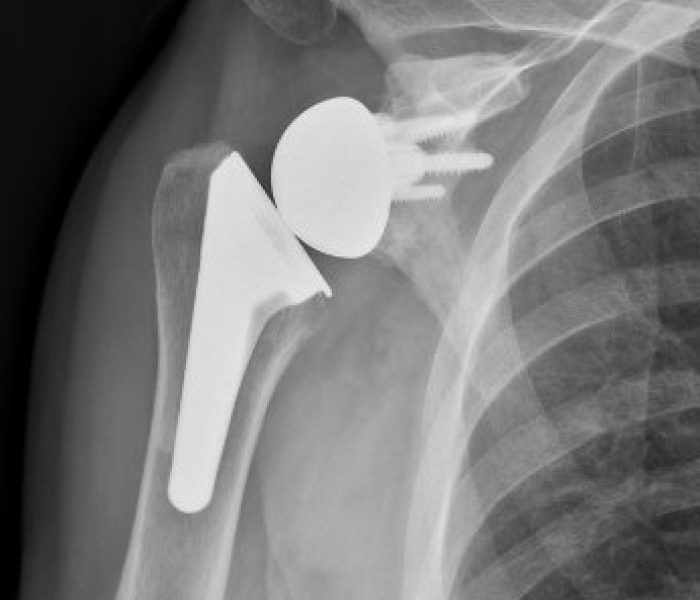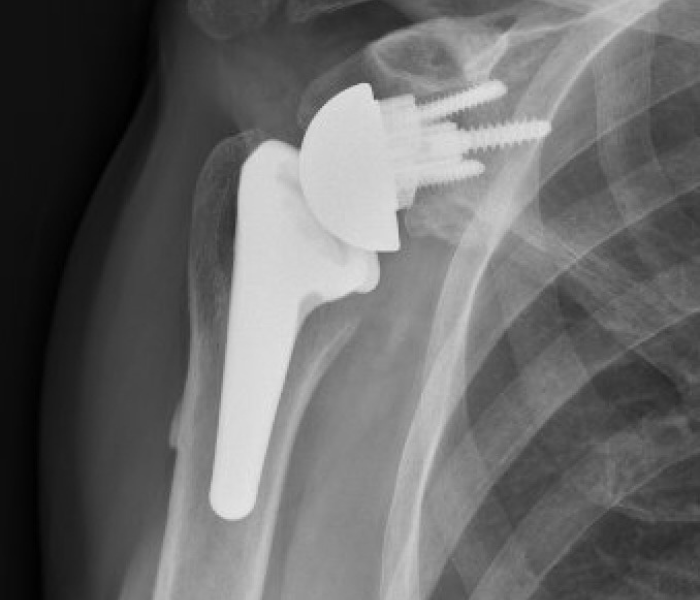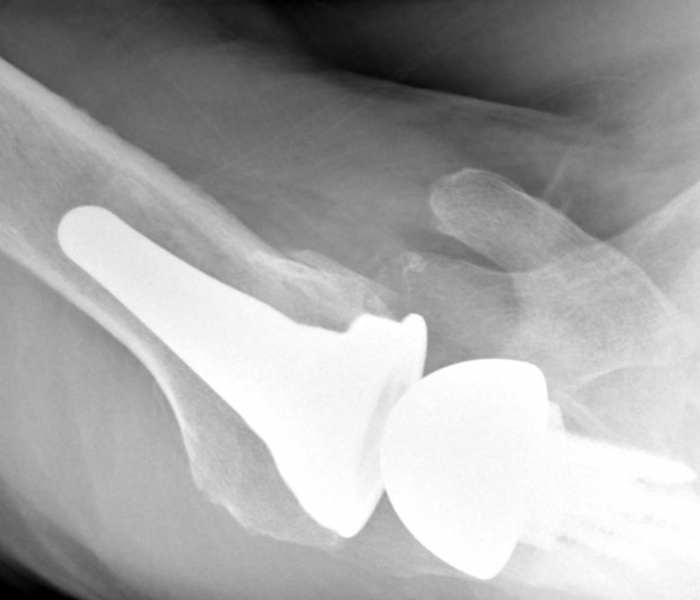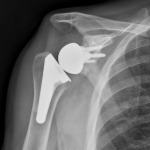Simple shoulder problems typically need simple solutions. For instance, when the smooth cartilage of the shoulder is worn away, but the remaining soft tissue structures of the shoulder are intact, the shoulder can be treated with a shoulder replacement to replace the arthritic ball and socket of the shoulder. The shoulder can be treated with a new "ball" (typically cobalt chrome) that is often attached to a stem inside the humerus. The socket is treated with a new polyethylene liner which is cemented into place. We call this an anatomic shoulder replacement.
When there is a combination of problems, such as arthritis of the ball and socket plus rotator cuff tearing, the shoulder can present with weakness, instability, and degenerative changes. This complex group of problems is called cuff tear arthropathy. An anatomic shoulder replacement will not function properly in this situation. The ball slips out of the socket because the muscles are no longer functioning to center the ball on the new plastic socket. Research has shown that when a patient has cuff tear arthropathy, the best orientation for the shoulder replacement components are in a reversed position. A small plate is attached to the socket side and a ball (called the glenosphere) is attached to the plate. On the humeral (arm) side, a plastic socket is attached to a stem that is placed in the canal of the humerus bone. We call this a reverse shoulder replacement. This reversed arrangement offers enhanced stability and improved function for patients with cuff tear arthropathy.
For patients in this situation with a chronically torn rotator cuff, the reverse replacement will have improved outcomes over an anatomic shoulder replacement due to the improved stability and the ability for the deltoid to power elevation of the shoulder. However, the reverse shoulder replacement is not the best option for patients with a healthy rotator cuff. The best outcomes are achieved using an anatomic shoulder replacement when the rotator cuff is healthy.
Reverse shoulder replacements, also called reverse shoulder arthroplasty (RSA), can also be used in other situations besides cuff tear arthropathy. Reverse shoulder arthroplasty is also performed for proximal humerus fractures, glenoid bone loss, massive irreparable rotator cuff tears, and revision arthroplasty.
Outcomes depend on more than just a successful surgery. In my practice, the best patient outcomes are achieved when successful surgery is paired with an excellent post surgery physical therapy program. Physical therapists guide patients on what exercises to do and what precautions they should take to protect the reconstruction. The home exercise program is also crucial to success. The combination of a successful surgery, physical therapy program, and home exercise program helps optimize outcomes after reverse shoulder replacement surgery. Patients must also be engaged and understand the plan for pre-surgery and after surgery expectations to help ensure the best results.



To answer the question in the title: surgeons place the shoulder in reverse to help patients with complex problems (like cuff tear arthropathy) have the best function and stability.
Please reach out at info@benservicemd.com with any questions you have about this topic or any others you would like to see covered.
Thank you for reading!
Ben Service, MD, FAAOS








